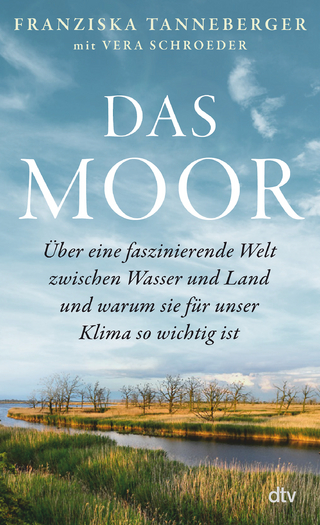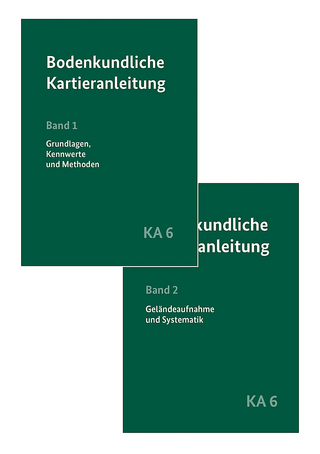
Geoinformatics
Cambridge University Press (Verlag)
978-1-108-44658-7 (ISBN)
Advanced information technology infrastructure is increasingly being employed in the Earth sciences to provide researchers with efficient access to massive central databases and to integrate diversely formatted information from a variety of sources. These geoinformatics initiatives enable manipulation, modeling and visualization of data in a consistent way, and are helping to develop integrated Earth models at various scales, and from the near surface to the deep interior. This book uses a series of case studies to demonstrate computer and database use across the geosciences. Chapters are thematically grouped into sections that cover data collection and management; modeling and community computational codes; visualization and data representation; knowledge management and data integration; and web services and scientific workflows. Geoinformatics is a fascinating and accessible introduction to this emerging field for readers across the solid Earth sciences and an invaluable reference for researchers interested in initiating new cyberinfrastructure projects of their own.
G. Randy Keller is a Professor of Geophysics and McCollough Chair at the Mewbourne College of Earth and Energy, University of Oklahoma. He has collaborated with Chaitanya Baru since the emergence of geoinformatics as an organized scientific initiative in the USA in the late 1990s, helping to lead and organize the US Geoinformatics initiative and communicate its potential to colleagues around the world both informally and through many appointments to advisory committees. He is also a Principal Investigator on the GEON (Geoscience Network) project that is a major effort funded by the National Science Foundation. Professor Keller's research has focused on applications specific to the geosciences. Chaitanya Baru is a Distinguished Scientist at the San Diego Supercomputer Center, University of California, San Diego. He has collaborated with G. Randy Keller since the emergence of geoinformatics as an organized scientific initiative in the USA in the late 1990s, helping to lead and organize the US Geoinformatics initiative and communicate its potential to colleagues around the world both informally and through many appointments to advisory committees. He is also a Principal Investigator on the GEON (Geoscience Network) project that is a major effort funded by the National Science Foundation. Dr Baru's work at the San Diego Supercomputer Center has involved cyberinfrastructure activities across a range of scientific subject areas.
List of contributors; Preface; Introduction: 1. Science needs and challenges for geoinformatics G. Randy Keller; 2. Introduction to IT concepts and challenges Chaitanya Baru; Part I. Case Studies from Other Disciplines: 3. Semantic cyberinfrastructure: the virtual solar-terrestrial observatory Peter Fox and Deborah L. McGuinness; 4. Cyberinfrastructures for life sciences and biomedicine Sriram Krishnan and Ravi Madduri; Part II. Modeling Software and Community Codes: 5. Development, verification and maintenance of computational software in geodynamics Michael Gurnis, Walter Landry, Eh Tan, Luis Armendariz, Leif Strand and Michael Aivazis; 6. Parallel finite element modeling of multi-timescale faulting and lithospheric deformation in the western US Mian Liu, Youqing Yang, Qingsong Li, Gang Luo and Huai Zhang; 7. Next-generation plate-tectonic reconstructions using GPlates James A. Boyden, R. Dietmar Müller, Michael Gurnis, Trond H. Torsvik, James A. Clark, Mark Turner, Hamish Ivey-Law, Robin J. Watson and John S. Cannon; Part III. Visualization and Data Representation: 8. Visualization of seismic model data Amit Chourasia; 9. The UNAVCO GEON Integrated Data Viewer for exploration, analysis, and integration of geoscience data Stuart Wier and Charles Meertens; Part IV. Knowledge Management and Data Integration: 10. Data and tools for geologic timelines and timescales Peter Sadler and Cinzia Cervato; 11. Modeling geodynamic processes with ontologies Hassan Babaie; Part V. Web Services and Scientific Workflows: 12. Service orientation in the design of a community hydrologic information system Ilya Zaslavsky and David Maidment; 13. Web services for seismic data archives Robert Casey and Timothy Ahern; 14. Development of robust data system for gravity and magnetic anomaly data: a case study of a community-based effort for point data Raed Aldouri and G. Randy Keller; 15. Scientific workflows for the geosciences: an emerging approach to building integrated data analysis systems Ilkay Altintas, Daniel Crawl and Christopher Crosby; 16. Online access and processing of Lidar topography data Christopher Crosby, J. Ramon Arrowsmith, Viswanath Nandigam and Chaitanya Baru; 17. Use of abstraction to support geoscientists' understanding and production of scientific artifacts Ann Gates, Paulo Pinheiro da Silva, Leonardo Salayandia, Omar Ochoa, Aida Gandara and Nicholas Del Rio; Part VI. Emerging International and Other Efforts: 18. It's not your data, it's everyone's: the benefits of a corporate approach to scientific information Ian Jackson and Richard Hughes; 19. TOPO-EUROPE and cyberinfrastructure: quantifying coupled deep earth-surface processes in 4D Sierd Cloetingh and H. P. Bunge; 20. OneGeology – from concept to global project Ian Jackson; 21. Geoinformatics developments in Germany Jens Klump, Joachim Wächter, Peter Löwe, Ralf Bill and Matthias Lendholt; 22. iGEON: networking the Indian geosciences community through GEON K. V. Subbarao, Arun Agarwal, Rajeev Wankar and Chaitanya Baru; 23. Geoinformatics in the public service: building a cyberinfrastructure across the geological surveys M. Lee Allison, Linda C. Gundersen and Stephen M. Richard; 24. Application of the U.S. geoscience information network to deploying a national geothermal data system Stephen M. Richard, Ryan Clark and Wolfgang Grunberg; Index.
| Erscheinungsdatum | 14.03.2018 |
|---|---|
| Zusatzinfo | Worked examples or Exercises; 5 Tables, black and white; 41 Plates, color; 40 Halftones, black and white; 6 Line drawings, black and white |
| Verlagsort | Cambridge |
| Sprache | englisch |
| Maße | 170 x 244 mm |
| Gewicht | 720 g |
| Themenwelt | Naturwissenschaften ► Geowissenschaften ► Geografie / Kartografie |
| Naturwissenschaften ► Geowissenschaften ► Geologie | |
| Naturwissenschaften ► Geowissenschaften ► Mineralogie / Paläontologie | |
| ISBN-10 | 1-108-44658-2 / 1108446582 |
| ISBN-13 | 978-1-108-44658-7 / 9781108446587 |
| Zustand | Neuware |
| Informationen gemäß Produktsicherheitsverordnung (GPSR) | |
| Haben Sie eine Frage zum Produkt? |
aus dem Bereich


